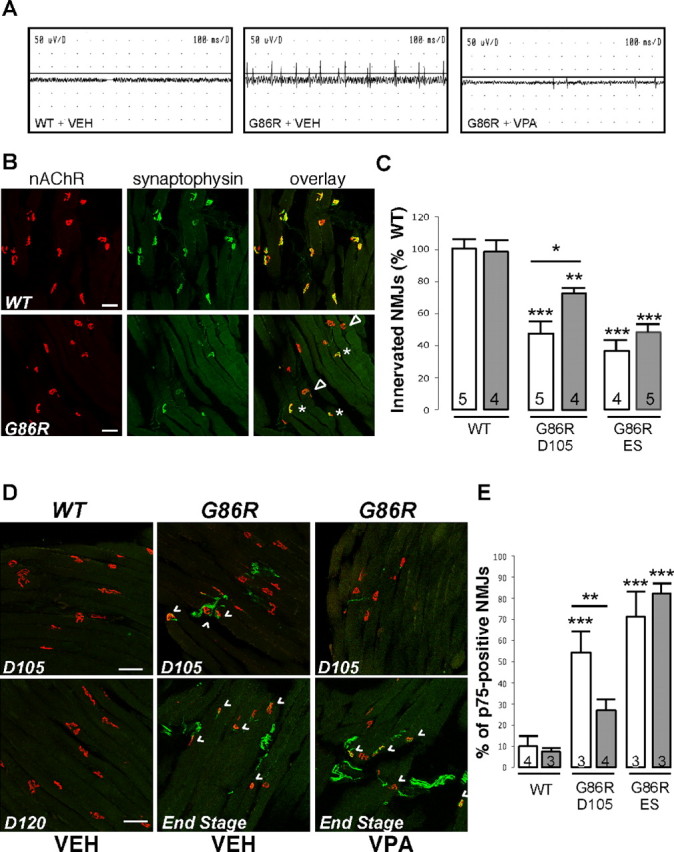Figure 7.

Chronic VPA delays but does not prevent skeletal muscle denervation. A, Representative electromyography recordings performed on 100-d-old WT mice (n = 4) or G86R mice (score 3) daily injected with VEH (n = 3) or VPA (n = 3). B, Typical confocal photographs representing innervated NMJs in the gastrocnemius muscle of a WT and a G86R (end-stage) mouse. nAChRs are labeled with fluorescent α-BGT binding (red), and nerve terminals are labeled by immunochemistry of synaptophysin (green). Fully and partially innervated nAChR clusters are denoted by asterisks and arrowheads, respectively, Scale bars, 25 μm. C, Count of innervated NMJs in each experimental group. D, Visualization of nAChR (α-BGT; red) and p75 immunoreactivity (green) in WT and mutant G86R mice chronically treated with VPA or not as noted. A representative overlay (confocal analysis) is shown for each animal group. NMJs counted as positive are shown with arrowheads. WT mice corresponding to each disease stage tested were killed as noted (D105 and D120). Scale bars, 25 μm. E, Counts of p75-positive NMJs in the gastrocnemius muscle of WT and G86R chronically treated with vehicle or VPA. C, E, The data represent means ± SEM. The number of each animal tested is noted within the histogram. Statistical analysis were performed with ANOVA followed by the post hoc Newman–Keuls multiple-comparisons test (Prism) All situations are compared with WT, and in each group, VPA treatment (gray histograms) is compared with VEH (white histograms). *p < 0.05; **p < 0.01; ***p < 0.001.
